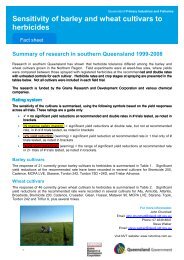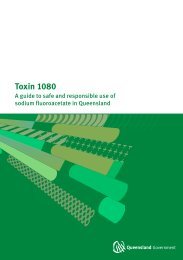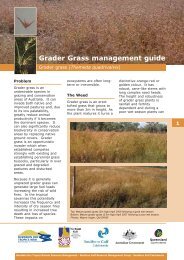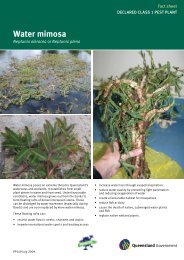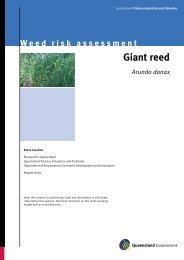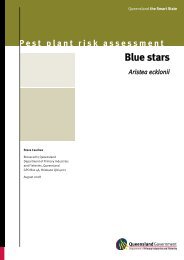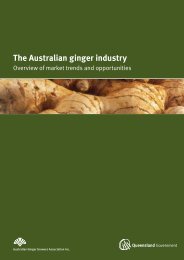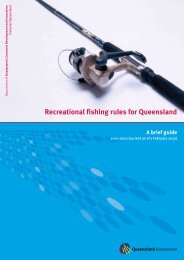Insect Control in Stored Grain - Department of Primary Industries
Insect Control in Stored Grain - Department of Primary Industries
Insect Control in Stored Grain - Department of Primary Industries
You also want an ePaper? Increase the reach of your titles
YUMPU automatically turns print PDFs into web optimized ePapers that Google loves.
Table 6: Feed gra<strong>in</strong>s and seed- <strong>Insect</strong>icide application rates for cereal gra<strong>in</strong>s for use on<br />
farm for seed or animal feed, or for sale for animal feed. Alternatives <strong>in</strong> Table 7 can also be<br />
used. If gra<strong>in</strong> is to be sold, use <strong>in</strong>secticides only if approved by your buyer or handler. Cereal gra<strong>in</strong>s <strong>in</strong>clude:<br />
barley, maize, millets, oats, rice, sorghum 5 , triticale, wheat.<br />
<strong>Insect</strong>icide<br />
(For Trade names<br />
– see table 9)<br />
Apply a mixture<br />
<strong>of</strong><br />
either pirimiphosmethyl<br />
(900g/L<br />
product)<br />
Storage period<br />
6 weeks-<br />
3 months-<br />
3 months<br />
9 months<br />
Rate/ Cost<br />
tonne<br />
1<br />
2 Rate/<br />
tonne 1<br />
4.5<br />
mL<br />
Cost 2<br />
Withhold<strong>in</strong>g period (WHP) 3 and<br />
restrictions on use<br />
30-35c 4.5 mL 30-35 c No Withhold<strong>in</strong>g period<br />
or<br />
chlorpyriphosmethyl<br />
(500g/L<br />
product)<br />
10 mL 75-80c 20 mL 150-160c No Withhold<strong>in</strong>g period<br />
or fenitrothion 6 mL 18-20c 12 mL 35-40 c Withhold<strong>in</strong>g period 90 days for<br />
or deltamethr<strong>in</strong><br />
(250g/L product) +<br />
pip. butoxide<br />
With carbaryl<br />
(check with gra<strong>in</strong><br />
buyer)<br />
the high rate<br />
4 mL 15-20c 4 mL 15-20c No Withhold<strong>in</strong>g period. May not<br />
be generally available.<br />
10 mL 12 c 16 mL 19 c Withhold<strong>in</strong>g period 90 days for<br />
the high rate<br />
Do not use carbaryl on malt<strong>in</strong>g<br />
barley, mill<strong>in</strong>g wheat, or gra<strong>in</strong> for<br />
bulk handlers<br />
Notes on Table 6:<br />
Trade names <strong>of</strong> these <strong>in</strong>secticides are listed <strong>in</strong> Table 9.<br />
1. Dilute liquid concentrates <strong>in</strong> water at the specified rate per litre, then spray 1 litre <strong>of</strong> the mixture<br />
per tonne <strong>of</strong> gra<strong>in</strong> while augur<strong>in</strong>g the gra<strong>in</strong>. Add dusts directly to the gra<strong>in</strong>.<br />
2. Costs (cents per tonne <strong>in</strong> 2006) for chemicals only are presented as an approximate guide.<br />
Large pack sizes are cheaper per tonne treated than small packs.<br />
3. <strong>Insect</strong>icide residues must not exceed Maximum Residue Limits (MRL). Where application rates<br />
exceed MRL you must wait the withhold<strong>in</strong>g period to allow residues to decay to less than the MRL<br />
before you feed.<br />
4. Seedl<strong>in</strong>gs <strong>of</strong> some sorghum varieties are susceptible to toxicity from organophosphorus<br />
<strong>in</strong>secticides such as pirimiphos-methyl, fenitrothion and chlorpyriphos-methyl.<br />
9





